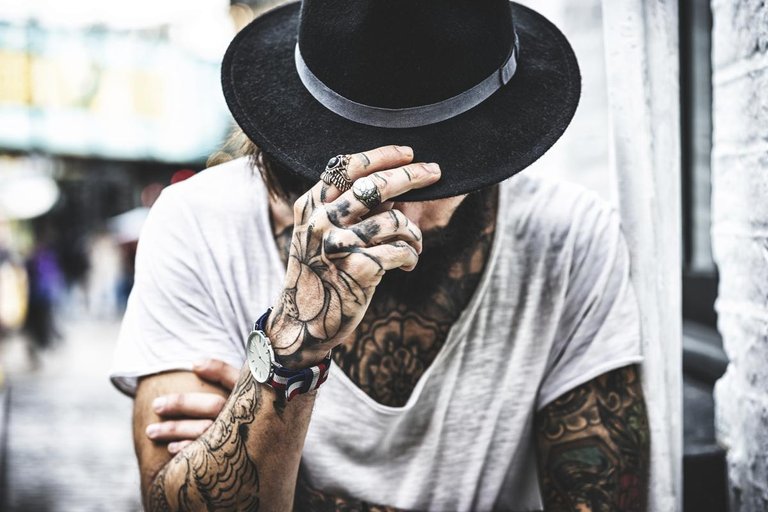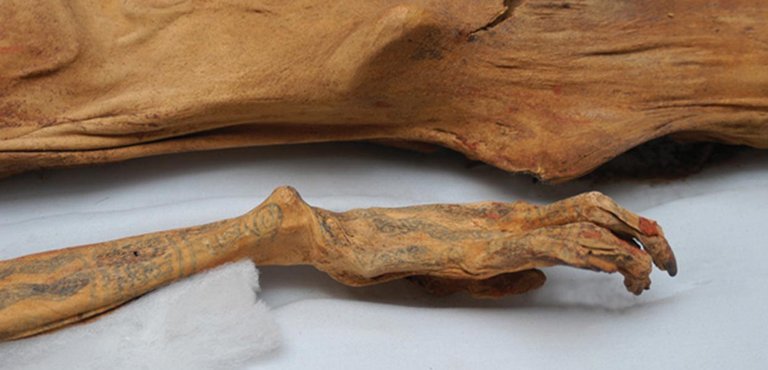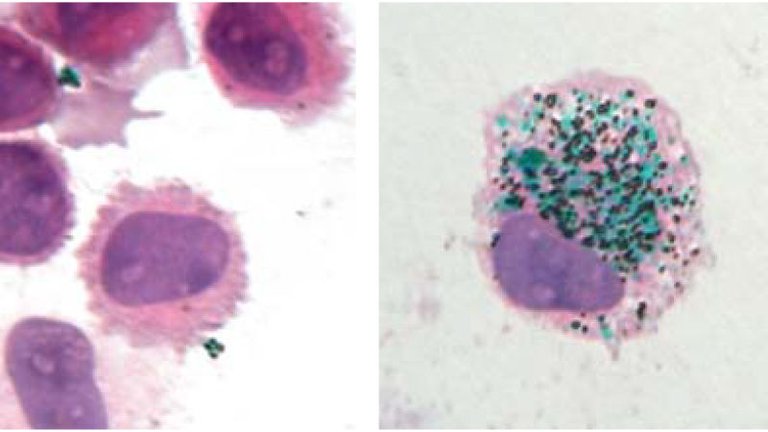Studies have shown that it’s highly improbable to walk around a city without seeing at least one person with a tattoo.
So, these permanent portable pieces of art are clearly an important part of our culture.
Thousands of years ago, many different ingredients were used for inks.
Different colors came from ground up natural products like copper, graphite, tree bark, wood and ashes.
The history of tattoos is long and rich with the earliest evidence of tattooed humans dating back to 6th millennium BC (found on a Peruvian mummy). Archeologists have uncovered tools, ancient art, and mummified skin that prove the practice has been alive and well all over the world for centuries.
The permanence of tattoos on skin, however, is something that's bothered scientists for quite some time.
Tattoos have literally been leaving their mark on people and cultures across the world for centuries.
But, you may also know that we shed our skin, losing about 30,000-40,000 skin cells per hour, or around 1,000,000 per day. Anything drawn onto the skin would gradually flake or get washed off.
Yet, tattoos stay on our skin forever. How is that even possible?
Well, to understand better the art of tattooing we need to understand the necessary tools for the process.
Throughout history, different cultures have used various methods to accomplish tattoos. The first modern tattooing machine was modeled after Thomas Edison’s engraving machine and ran on electricity.
Nowadays, most tattooing is done with multiple needles attached to one bar connected to a machine. The needles may be assembled in a straight line, in a circle or stacked on top of each other. It all depends of the needs of that specific piece.
The skin is made up of three layers:
- The epidermis (exposed to the environment)
- The dermis (hair follicles and sweat glands are there)
- The Hypodermis (a subcutaneous layer of fat and connective tissue)
Ink isn’t being injected into your skin from the needles rather the ink flows down the needles once they pierce through to the dermis.
However, once the ink is inside our skin what happens next?
That’s when the wonders of biology come into play.
The reason why the tattoo sticks around so long is all thanks to the immune cells called macrophages (a type of white blood cell) that target and soak up the ink as they would a basic infection. However, the pigment in the ink is too large for the macrophages to remove, so the macrophages — with the ink inside — end up stuck in the dermis.
However, what happens when old cells, including macrophages, die off and are replaced with new ones?
When the tattoo is brand new, the ink is in both the epidermis and the dermis layer of your skin. That’s why the process of getting a tattoo also includes time letting your skin heal, with the body taking two to four weeks to initially heal. As the skin ages, the fibroblasts die off and are replaced with new ones, so over time, the ink migrates a little as the cells turn over. That means that tattoos will gradually fade over time, a process that is also sped up by other things like light from the sun.





Interesting post! I love how tattoos are found in the histories of hundreds of cultures around the world. It's truly an art-form beyond boundaries. <3
Exactly.It's a universal thing and I believe as years go by more and more people will have at least one.It isn't gonna be a taboo anymore as it may have been a few years ago.
Very cool and educative post bro! I wondered about this but never that much to research it, so this post was kinda gift to me xD
I love science so I was reading this with ease. So cool! :D
Thank you so much.Glad you found it informative and easy to read.
Wow fascinating reading I often wondered why mine have faded had thm for 20 years even in some parts they look patchy where the skin is showing very interesting.
Well, now you have a better understanding of the topic.Thank you for your comment!
What a brilliant post @unshakeable. Lots of information I had no idea about and it's very interesting indeed.
That is crazy! I liked how you added this in before explaining how the ink is permanently held under our skins layer. It grabbed my attention right before you delivered the goods.
Honestly, fantastic post. You nailed the formatting and style too.
Thank you so much.Your appreciation motivates me to write even more!Glad you enjoyed the reading!
Oooooo... I just always knew it was just 'scarring' the tissue but this helps me understand more. :D
Hahaha exactly. Steemit makes you learn stuff and have fun too while doing so!
Really interesting facts! Nice post!
Thank you anna <3